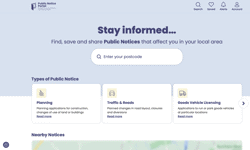The world can change within a few months and the media companies which survive and prosper will be those which have the ability – and the culture – to innovate, adapt fast, ditch things that don’t work and reshape their products as new opportunities emerge.
Future will be among them. We may still generate the bulk of our revenues and profits from more than 80 beautifully produced consumer magazines, but Future has already evolved a mindset which relishes the challenge of generating more and more business in the digital world as well as on the newsstand.
A classic example was our recent launch of 14 special iPad apps on subjects ranging from performance cycles through guitars, films, classic rock albums and gadgets to science fiction heroes. We had already established that people are prepared to pay for content on iPads and other tablets. The 14 specials were intended to test the market for new types of product and new ways of engaging with audiences worldwide which we had never been able to reach in the past. The apps were produced by our in-house editorial teams with no outside help – demonstrating as well that we can generate new product within existing resources.
Developing new content for tablets is one aspect of a digital strategy which is aimed at ensuring Future evolves steadily into a multi-platform publisher with a broadening range of revenue lines. Future has already progressed further down this road than most of its competitors. We generate more than a quarter of our advertising revenues from online and mobile markets and already generate revenues from e-commerce. We also operate a number of successful, high-traffic websites. The leading light here is www.techradar.com, which has become the leading technology and product ratings website in the UK (surpassing cnet.com) and generates 5m unique visits a month. In a classic reversal of normal publishing trends, we have been launching print magazines as spin-offs from it.
In the online space, our focus is firmly on generating higher traffic levels – and we have developed a number of smart techniques for achieving that – so that we can in turn produce increasing revenues from advertising and click-throughs. We have become adept at utilising social networks to engage with our audiences and that is another way we can bring on board new readers and open up new monetisation opportunities.
We see interesting new opportunities in digital markets outside the UK. We are world leaders in many of the specialist areas we cover. We are now building partnerships with major players in other geographies so that we can work with them to grow high-value specialist niches.
We also see chances to develop new products, new add-ons and new revenues from our digital archives.
We don’t see printed magazines fading away any time soon. We know that people love them and are seeing growth above all in top-end, high-quality products. But we know that the rapid pace of change in media technology and consumption habits mean we have to be able to deliver our content in any number of new ways. I know of no other media company where everyone is so totally aligned around that simple objective. It is that mindset which is making Future both a UK and a world leader in digital transformation.










